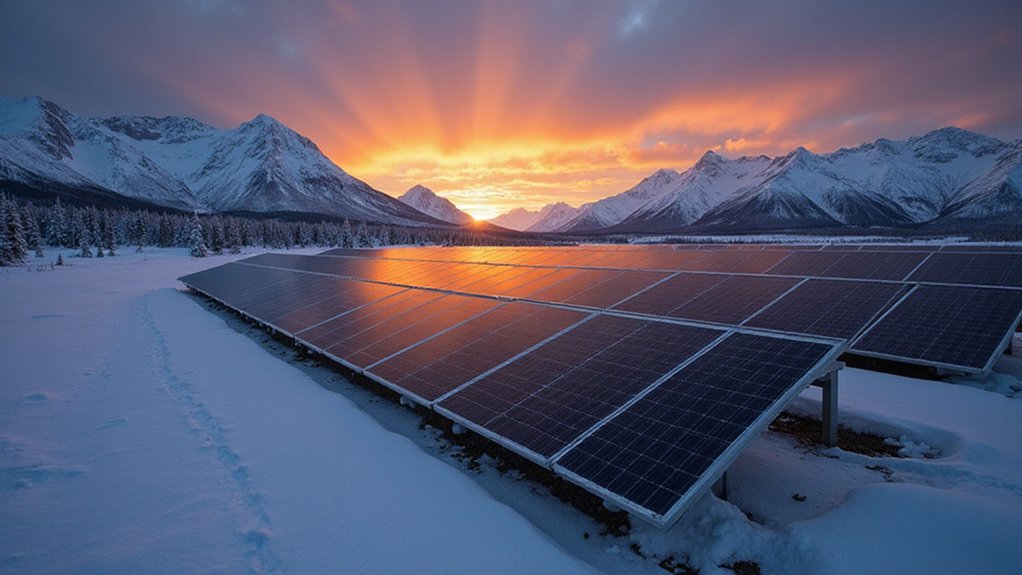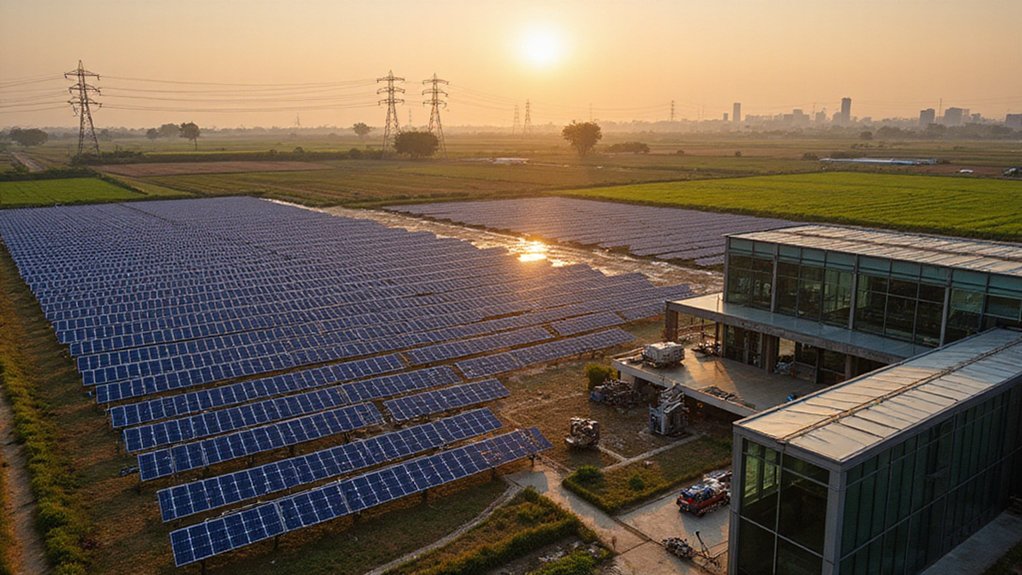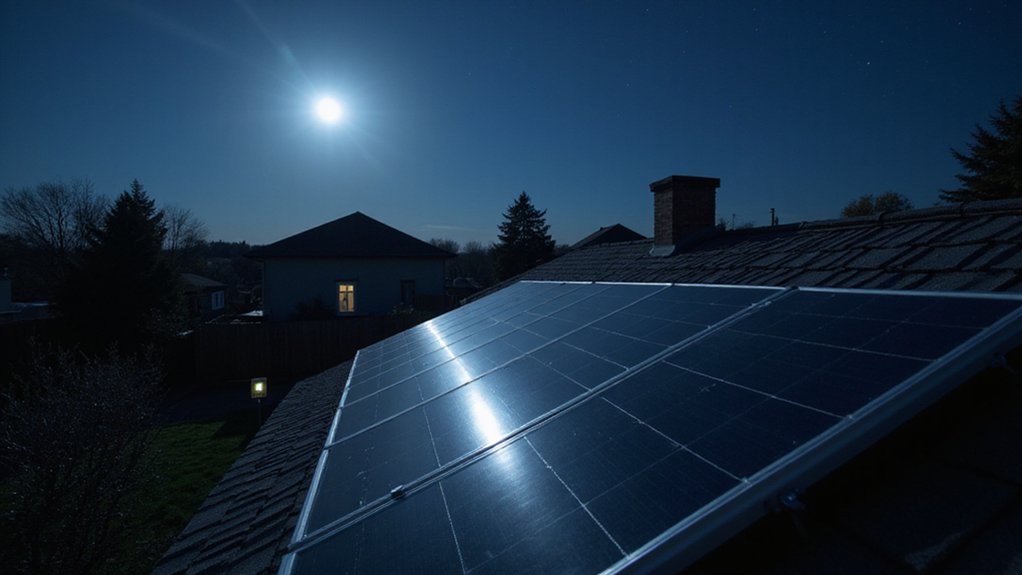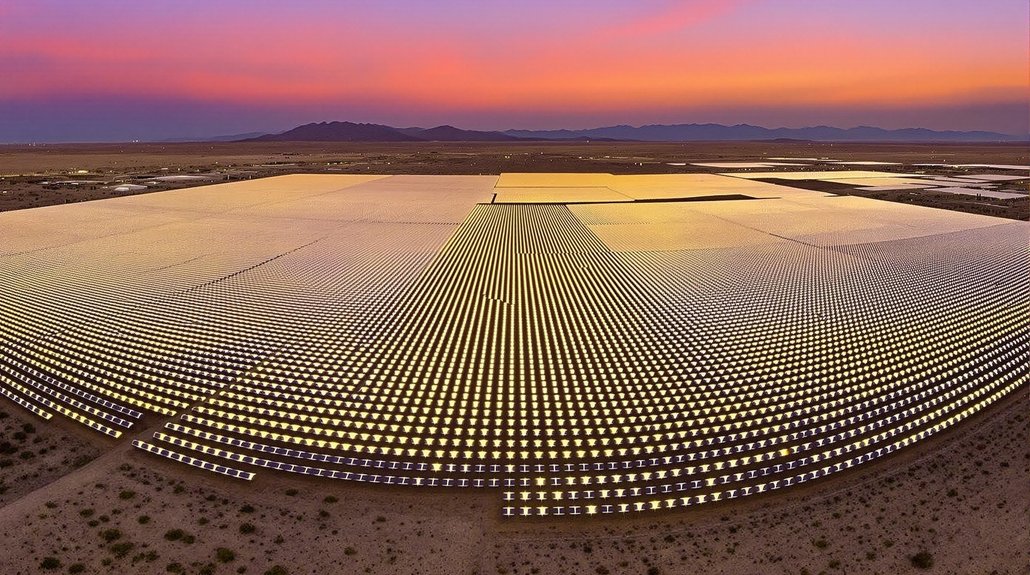Alaska’s Midnight Sun is changing how people think about solar energy. In a state known for long, dark winters, the summer months offer up to 24 hours of daylight. Solar panels are now capturing this extended sunlight, producing power when it’s needed most. The snow’s reflective properties actually boost energy production during spring months. Despite harsh conditions and high startup costs, projects like the Houston Solar Farm prove that renewable energy can succeed in unexpected places.
Why is Alaska, known for its long, dark winters, increasingly turning to solar power? The answer lies in the state’s unique daylight patterns and growing interest in renewable energy alternatives.
Alaska’s “Midnight Sun” phenomenon provides extended daylight during summer months, creating surprising opportunities for solar energy production. Despite contributing only 0.04% of Alaska’s total energy as of 2019, solar power is gaining momentum across the state. Nearly 2,000 customers of Railbelt electric utilities now have solar installations connected to the grid.
Alaska’s midnight sun creates unexpected solar opportunities, driving rapid adoption despite its minimal current contribution to the state’s energy mix.
The state has seen remarkable growth in solar capacity, with approximately 8 megawatts of solar photovoltaic installations by the end of 2019. The Houston Solar Farm stands as Alaska’s largest solar project with an 8.5-megawatt capacity, while the Willow Solar Farm expanded to 1.2 megawatts, offsetting 2 million pounds of CO2 annually. Solar panels have become more viable in Alaska as installation costs have decreased by 82% since 2010, making the technology increasingly accessible to local communities.
What’s surprising to many is when solar panels are most productive in Alaska. April and May see peak production thanks to a combination of increasing daylight and the albedo effect, where sunlight reflects off snow back onto panels. Local initiatives like Solarize Fairbanks have helped educate residents about these unique advantages while facilitating group purchasing discounts. Summer months also yield strong results, though occasionally reduced by cloud cover. Innovative vertical panel orientation has enhanced energy generation during mornings and evenings, particularly benefiting from Alaska’s long spring and summer days.
Alaska’s harsh climate presents unique challenges for solar implementation. Installation costs can take years to recover, making solar a long-term investment rather than an immediate money-saver. Technical innovations have been necessary to adapt solar systems to Alaska’s extreme weather conditions.
Despite these obstacles, solar energy plays an important role in Alaska’s efforts to diversify its energy sources as natural gas production declines. The Alaska Energy Authority has supported solar development across the state, leading to over 660 solar installations statewide.
Small-scale pilot projects built between 2017 and 2020 have helped test solar viability in various Alaskan settings. The Koyukuk River community now boasts rural Alaska’s largest solar project, demonstrating that even in unexpected locations, solar power can contribute meaningfully to a cleaner energy future.









